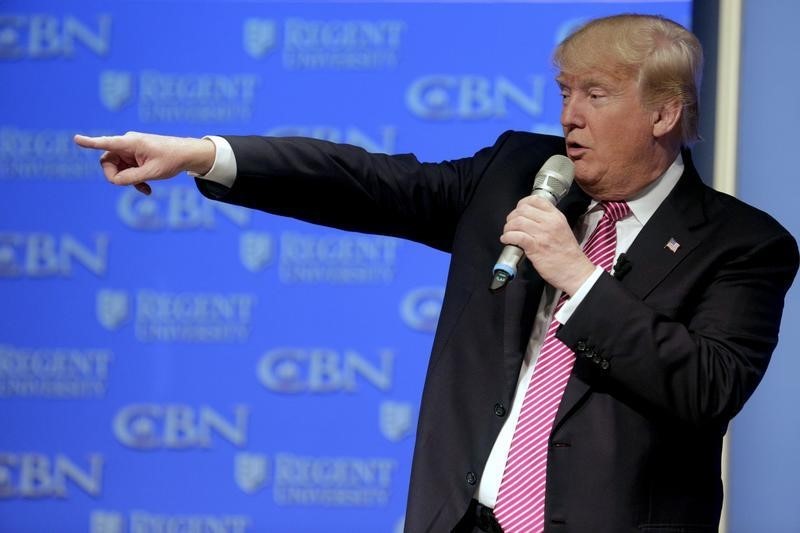By Tom Miles
GENEVA, March 5 (Reuters) - U.S. President Donald Trump's plans for a 25-percent tariff on U.S. imports of steel and 10 percent on aluminium have created a global outcry. The following explains why the use of these particular tariffs is so controversial among trade experts.
THE TARIFFS ARE GLOBAL
Unlike the punitive tariffs that the United States frequently imposes on "dumped" or unfairly subsidized goods from specified countries, Trump's steel and aluminium measures would apply to all countries.
They are "safeguard" tariffs, a kind of emergency shield erected to stop a sudden, unforeseen and damaging import surge that could seriously damage a particular industry. Critics of Trump's plans say the U.S. steel and aluminium industries face no such threat.
Trump's tariffs cover a broad range of steel and aluminium products, suggesting they are not being applied conservatively.
HARD TO CHALLENGE QUICKLY AND LEGALLY
Safeguard tariffs are legal under World Trade Organization (WTO) rules, but the checks and balances on them are weak.
They are meant to be accompanied by an offer of compensation for major supplier countries. Originally that implied a country imposing safeguards would lower tariffs on other goods to balance the economic impact. Nowadays that is less practical because many tariffs are already low.
So affected countries would be obliged to exact compensation by imposing tariffs or other measures on goods that they import from the United States. But they are not allowed to do so for three years.
If the complainants go to the WTO and litigate, they may lose their right to compensation and simply open up years of legal wrangling. A tit-for-tat trade war may begin, as they impose unsanctioned measures to even up the score.
JUSTIFIED BY "NATIONAL SECURITY"
Trump's tariffs are based on Section 232 of a 1962 U.S. law that allows safeguards based on "national security".
Presidents Richard Nixon and Gerald Ford used Section 232 tariffs to tax foreign oil in 1971 and 1975, according to a study by law firm White & Case LLC. Section 232 has not been used since the WTO was created in 1995, although the U.S. government considered and rejected such action in 1999 and 2001.
The WTO allows a national security exemption from its rules, but it has never been used as a defence in a trade dispute. Itc ould arise in a current row between Qatar and the United ArabEmirates, but that dispute is effectively in limbo unless Qatar actively pushes ahead with the case. U.S. dispute involving national security would threatenWTO discipline, since other countries would probably follow suit and use it to justify their own claims to be exempt from the rules.
Trump appeared to undermine the U.S. national security argument on Monday by tweeting that the tariffs would "come off" Mexico and Canada if they agreed a "fair" new deal in talks on the future of the North American Free Trade Agreement (NAFTA).
COLLATERAL DAMAGE
Although apparently intended to help U.S. steel and aluminium makers, the tariffs could lower profits for companies making everything from pickup trucks to canned soup, as well as increasing prices for consumers. also seem likely to damage U.S. allies such as Canada more than Trump's ultimate rival China. Many trade economists say Trump's zero-sum, "mercantilist" view of trade is misguided and that he is wrong to think trade deficits are always bad.
IMPACT ON WORLD TRADE SYSTEM?
The WTO is already on the verge of paralysis because theUnited States has vetoed new judicial appointments, letting thenumber of trade judges dwindle to four from the usual seven.
A trade war triggered by safeguard tariffs would open a newwound in the global trading system, because it would unravelalmost a quarter of a century of discipline and dethrone the WTOas the arbiter of global trade and a check on protectionism.
